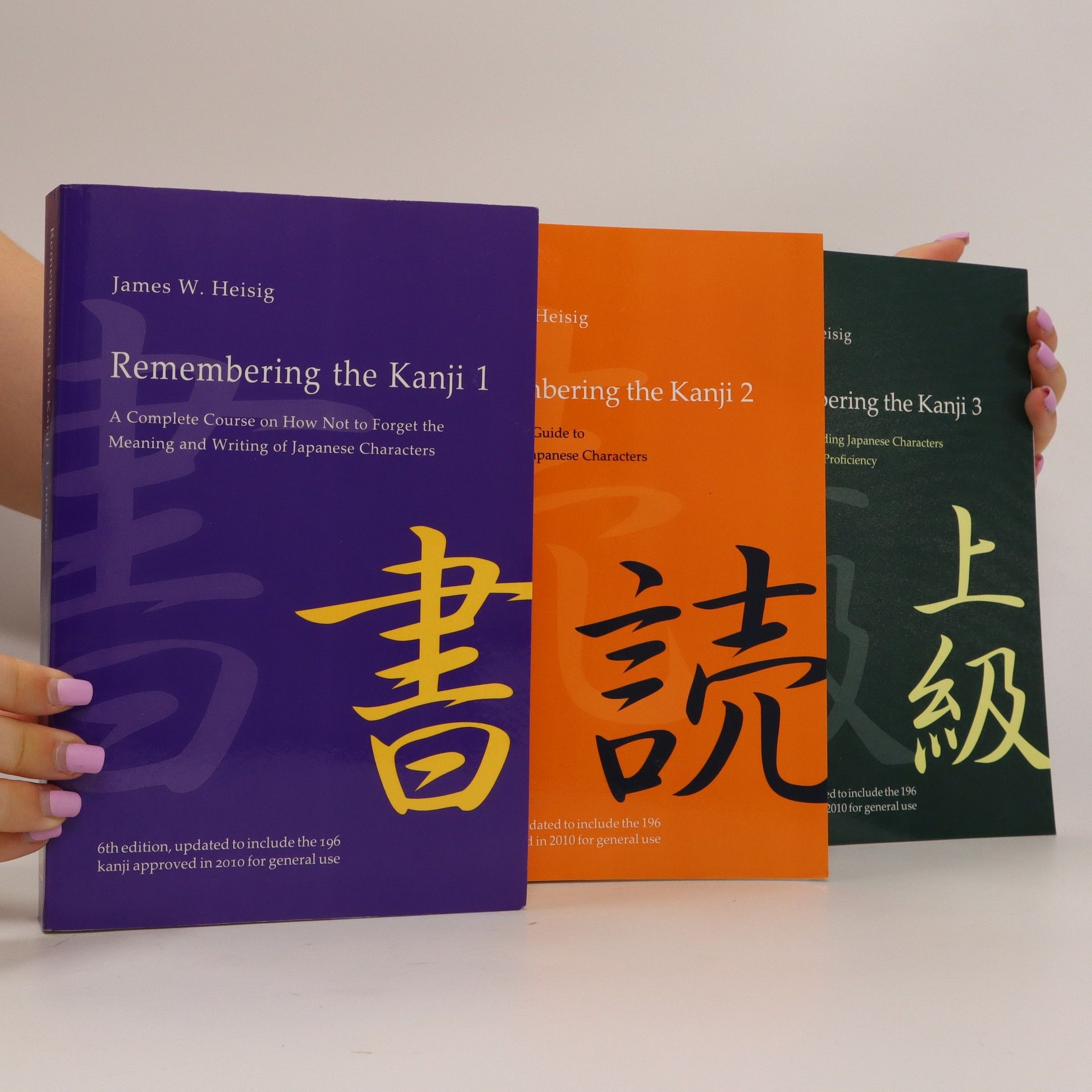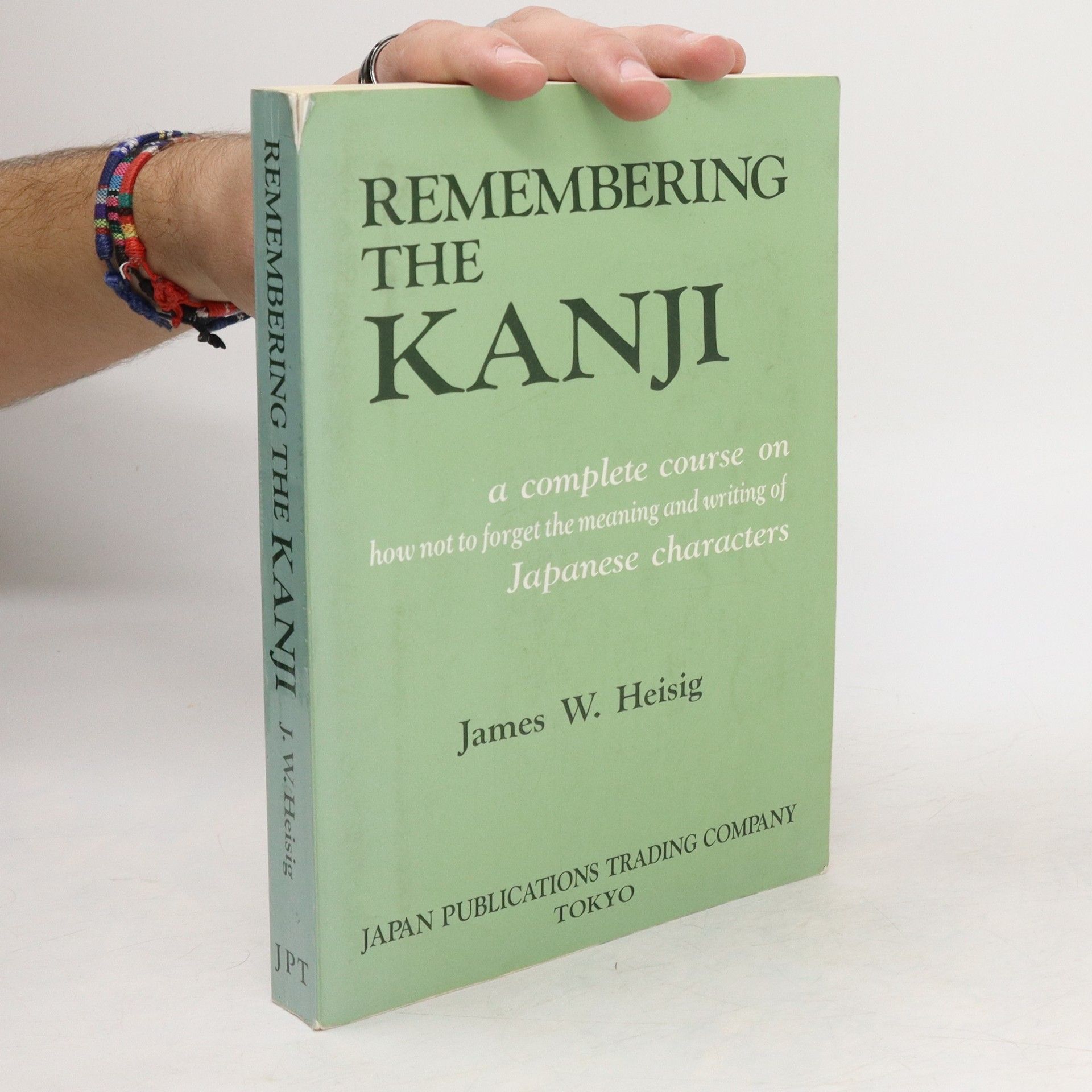Remembering the Kanji
- 500pages
- 18 heures de lecture






Focusing on the impact of incivility, the book challenges readers to reconsider how it affects personal interactions and society. It critiques the prevalence of moral outrage in conversations, suggesting that this trend undermines genuine civility. Through various stories and examples, the author advocates for a return to civil discourse and collective thinking, emphasizing the importance of civility in fostering meaningful connections and understanding. The aim is to inspire a shift towards more thoughtful and respectful communication.
A systematic guide to reading the Japanese characters
Following the first volume, this work equips students with tools for learning kanji pronunciation. The inconsistencies in Japanese pronunciation of characters from China reveal coherent patterns. Identifying and organizing these patterns can significantly reduce the time spent memorizing unrelated sounds. Many “primitive elements,” or building blocks of characters, also indicate the “Chinese reading” used in compound terms. By learning one kanji with a “signal primitive,” students can grasp an entire group simultaneously. The book details various phonetic patterns and offers strategies for learning readings that might seem random, presenting them efficiently and logically. Individual frames cross-reference kanji with alternate readings and connect to the first volume, where meanings and writing were introduced. A parallel system of “Japanese readings” links native words to specific Chinese characters. This method simplifies learning by associating meanings with single words. The author creates a phonetic alphabet of single-syllable words tied to simple Japanese terms, demonstrating how to combine them for memorizing challenging vocabulary. The 4th edition has been updated to include the 196 new kanji approved by the government in 2010 as “general-use” kanji.
Unparalleled in scope and detail, this classic history of Zen covers all important ideas and developments in the tradition from its beginnings in India through the Sung period in China.
This book is the second of two volumes designed to help students learn the meaning and writing of the 3,000 most frequently used simplified Chinese characters.
How Not to Forget the Meaning and Writing of Chinese Characters
At long last the approach that has helped thousands of learners memorize Japanese kanji has been adapted to help students with Chinese characters. Book 1 of Remembering Simplified Hanzi covers the writing and meaning of the 1,000 most commonly used characters in the simplified Chinese writing system, plus another 500 that are best learned at an early stage. (Book 2 adds another 1,500 characters for a total of 3,000.)Of critical importance to the approach found in these pages is the systematic arranging of characters in an order best suited to memorization. In the Chinese writing system, strokes and simple components are nested within relatively simple characters, which can, in turn, serve as parts of more complicated characters and so on. Taking advantage of this allows a logical ordering, making it possible for students to approach most new characters with prior knowledge that can greatly facilitate the learning process.Guidance and detailed instructions are provided along the way. Students are taught to employ "imaginative memory" to associate each character’s component parts, or "primitive elements," with one another and with a key word that has been carefully selected to represent an important meaning of the character. This is accomplished through the creation of a "story" that engagingly ties the primitive elements and key word together. In this way, the collections of dots, strokes, and components that make up the characters are associated in memorable fashion, dramatically shortening the time required for learning and helping to prevent characters from slipping out of memory.
Die Kana, also die Silbenschriften Hiragana und Katakana, sind die erste Herausforderung und auch das erste Abenteuer für alle, die Japanisch lesen und schreiben möchten. Für viele Lernende beginnt der Weg zu fließendem Japanisch jedoch mit hartem Drill, die fremd und abstrakt anmutenden Zeichen werden traditionell durch wochenlange Wiederholung erlernt. Die Kana lernen und behalten zeigt einen anderen Weg: Kleine Geschichten helfen, sich die Zeichen schnell und doch dauerhaft zu merken. Diese von James W. Heisig entwickelte Methode ist seit Jahrzehnten bewährt und gerade für erwachsene Lernende viel effektiver als pures Auswendiglernen abstrakter Strichfolgen. Sie greift auf Erinnerungen und individuelle Assoziationen zurück – diese müssen nicht mehr auswendig gelernt, sondern nur neu verknüpft werden. Daher entfallen die ermüdenden Wiederholungen und Schreibübungen, das Lerntempo steigert sich spürbar: Die Hiragana und Katakana können in je drei Stunden erlernt werden. Beginnen Sie den ersten Schritt auf Ihrem Weg zur japanischen Sprache nicht mit sturem Pauken, sondern mit lustvollem Imaginieren – und lassen Sie sich verzaubern von der Schönheit der japanischen Schrift.
Die Uneinheitlichkeit, mit der die japanische Sprache ihre aus China übernommenen Schriftzeichen liest, ist berüchtigt. Aber dennoch gibt es eine feste und recht breite Grundlage von stimmigen Mustern. Dieses Buch zeigt sie auf und verkürzt damit die bisher mit sturem Auswendiglernen verbrachte Zeit auf das mögliche Minimum. Der Wortschatz des Lesers erfährt dabei eine beträchtliche Erweiterung. Band 2 von Die Kanji lernen und behalten führt Schritt für Schritt durch die phonetischen Gruppierungen der Kanji und bietet wertvolle Hinweise für jene Zeichen, die sich einer Systematisierung hartnäckig verweigern. Verschiedene „amazon“-Rezensenten zur englischen Ausgabe: „Dieses Buch ist eine hervorragende Ergänzung zu “Die Kanji lernen und behalten„. Wer mit dem ersten Buch Erfolg hatte, dem sei dieser Band wärmstens empfohlen.“ „Die Kanji zu lernen gehört zum Schwierigsten, was das Japanischlernen mit sich bringt. Aber mit diesem Buch (zusammen mit “Die Kanji lernen und behalten„) muß das nicht so sein. Heisig hat schlicht die Tür zur japanischen Schriftlichkeit gefunden. Es liegt am Leser, sie entschlossen zu öffnen.“
Bedeutung und Schreibweise der häufigsten chinesischen Schriftzeichen (1501-3000)
Dieser zweite Teil von „Vereinfachte Hanzi lernen und behalten“ bringt Bedeutung und Schreibweise weiterer 1500 der häufigsten 3000 chinesischen Schriftzeichen. Die seit Jahrzehnten bewährte, revolutionäre Methode von James W. Heisig führt behutsam in die phantasievolle Welt des bildhaften Gedächtnisses ein, erschließt das Reich der Schriftzeichen anhand kleiner Erzählungen und mnemotechnischer Elemente, die nicht mehr auswendig gelernt, sondern nur neu verknüpft werden. Diese Methode ist keine Krücke, sondern eine andere Art zu laufen: Die ermüdenden Wiederholungen und Schreibübungen entfallen. So ist es nicht nur möglich, die chinesischen Schriftzeichen zu lernen, sondern sie auch nachhaltig ins Gedächtnis zu brennen.